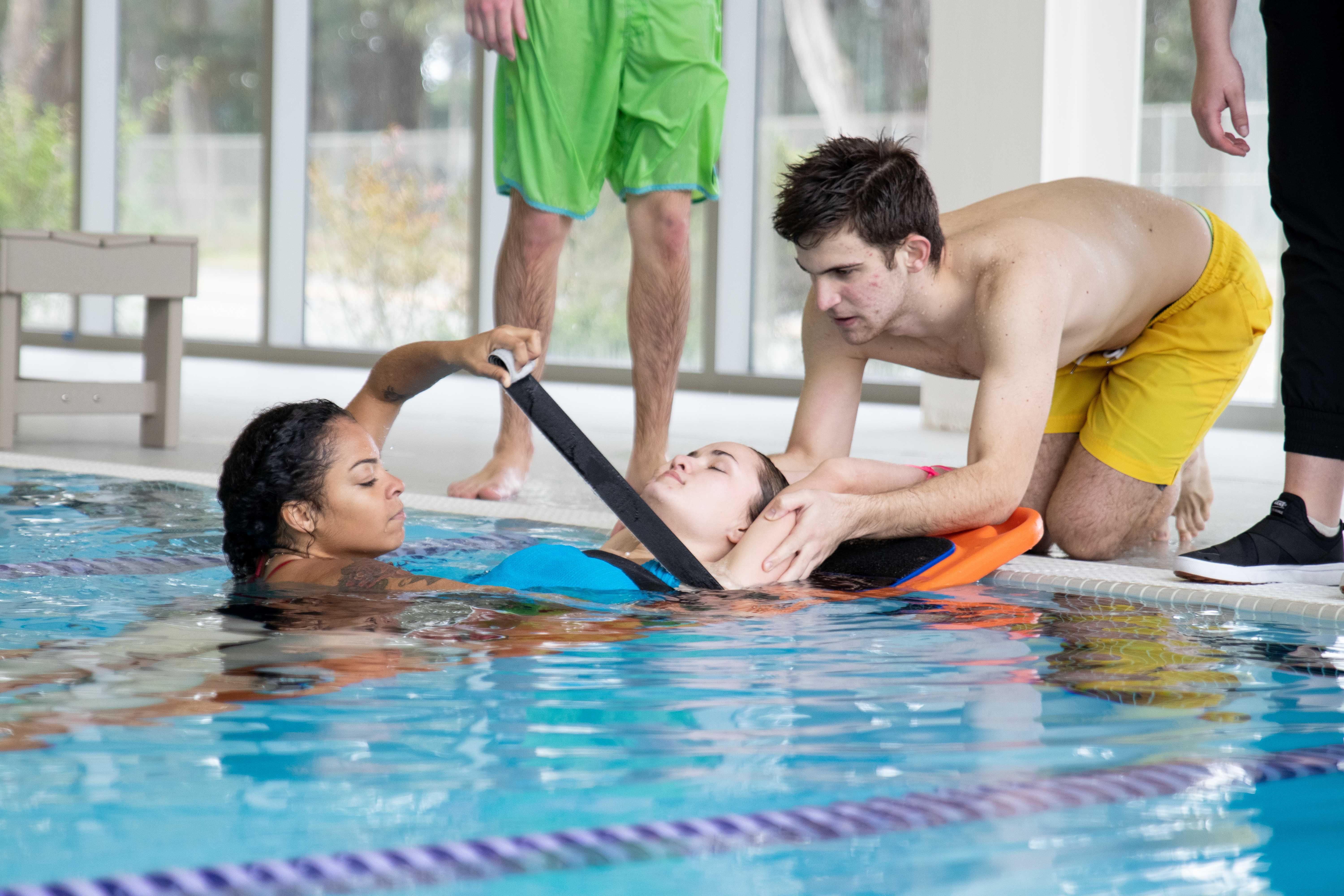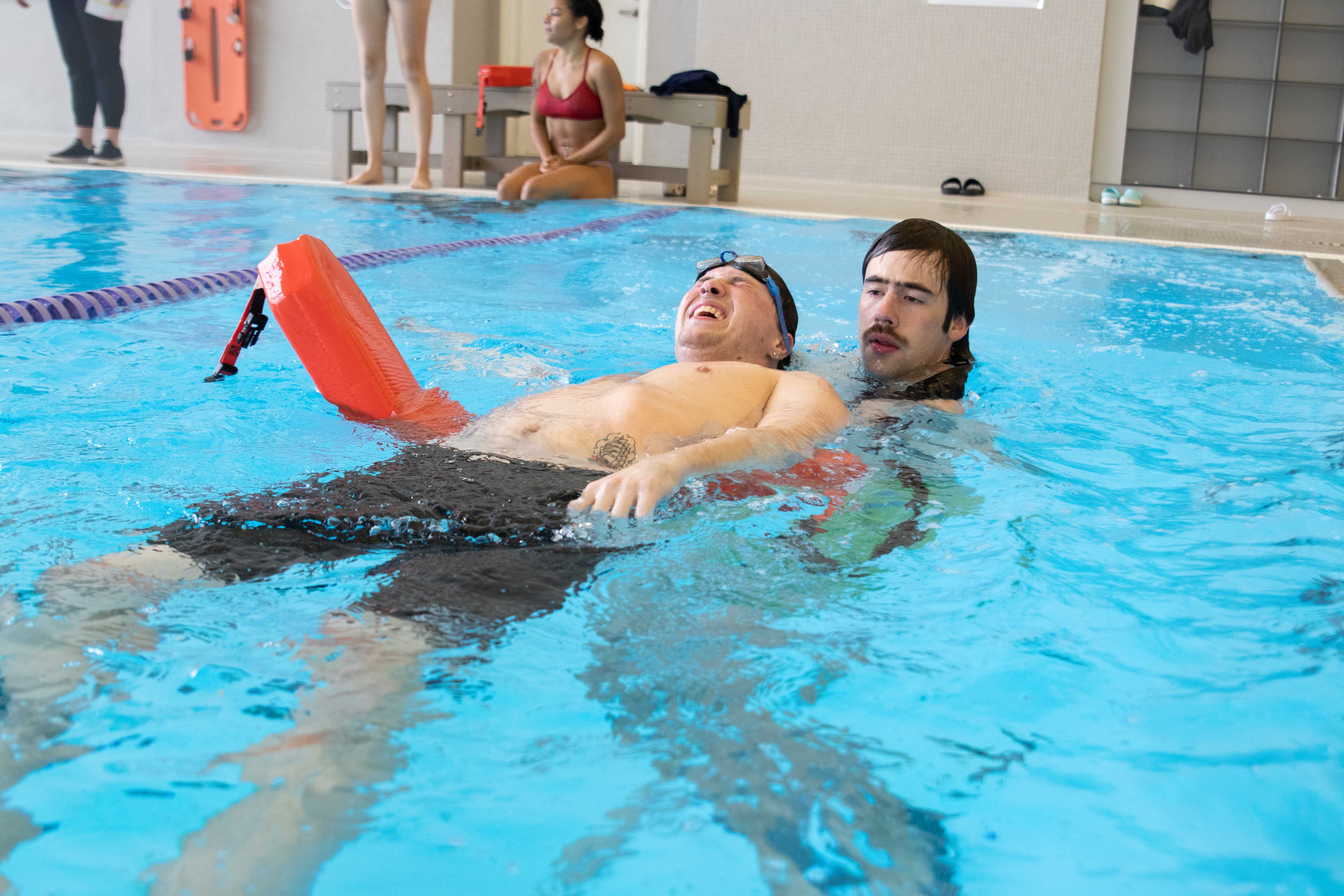Fall Semester 2025
The main goal of the American Red Cross Lifeguarding course is to equip participants with the necessary knowledge and skills to prevent, recognize, and respond to aquatic emergencies. It also aims to prepare them to provide professional-level care for breathing and cardiac emergencies, injuries, and sudden illnesses until Emergency Medical Services personnel take over. The program offers a choice of Lifeguarding/First Aid/CPR/AED courses to cater to the diverse training needs of different individuals.
Red Cross: Lifeguard Certification Course (LG)
Instructor-Led: 21 hours
Blended Learning: 8-9 hours of eLearning
- October 10, 11 & 12, 2025
Cost:
- State Students - $75
- SF State Faculty & Staff - $150
- SF State Alumni & Community - $275
Candidates must:
1. Be at least 15 years old on or before the final scheduled session of the course.
2. Lifeguarding (Including Deep Water)
3. Complete the two prerequisite swimming skills evaluations:
Prerequisite 1: Complete a swim-tread-swim sequence without stopping to rest:
- Jump into the water and submerge, resurface, then swim 150 yards using the front crawl, breaststroke, or a combination of both. (Swimming on the back or side is not permitted. Swim goggles are allowed.)
- Maintain position at the water's surface for 2 minutes by treading water using only the legs.
- Swim 50 yards using the front crawl, breaststroke, or a combination of both.
Prerequisite 2: Complete a timed event within 1 minute, 40 seconds:
1. Starting in the water, swim 20 yards. (The face may be in or out of the water. Swim goggles are not allowed.)
2. Surface dive (feet-first or head-first) to a depth of 7 – 10 feet to retrieve a 10-pound object.
1. Return to the surface and swim 20 yards on the back to return to the starting point, holding the object at the surface with both hands and keeping the face out at or near the surface.
2. Exit the water without using a ladder or steps.
To receive American Red Cross certification, participants must:
- Pass all course prerequisites,
- Attend all class sessions in their entirety,
- Demonstrate competency in all required skills and activities,
- Demonstrate competency in the final skills scenarios and
- Correctly answer 80% of the questions on the final written exam. Failure to meet the course prerequisites, attend all classes in their entirety, demonstrate competency in skills, or fail the written test will result in forfeiture of class fees, and certification will not be granted.
- Certificate Issued and Validity Period
Certificate Issued and Validity Period
- The American Red Cross certification for Lifeguarding/First Aid/CPR/AED is valid for two years.



